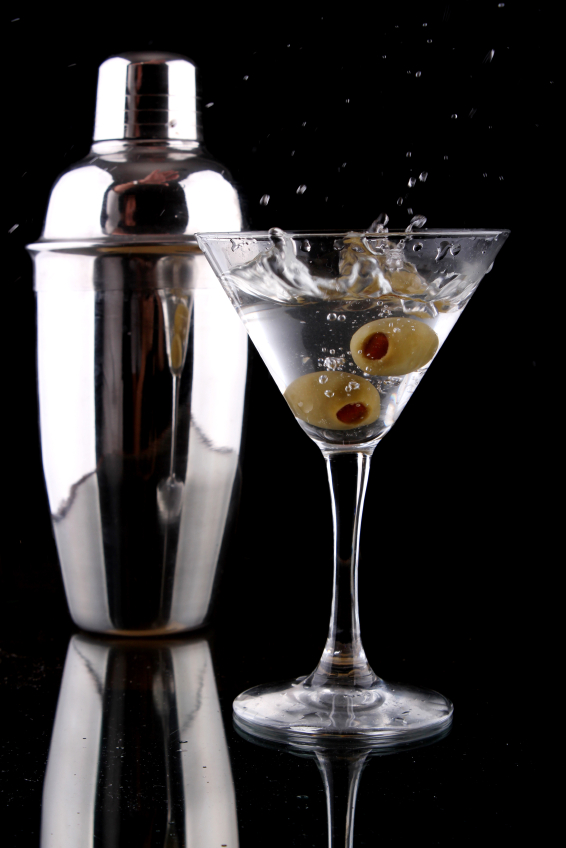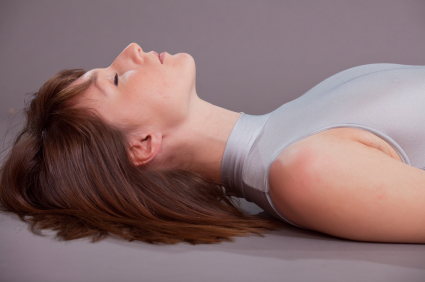Stress eating? Spare Tummy Tire? Try a little mindfulness…
Mindfulness. It keeps popping up in different areas of health. Last time I posted about mindfulness training, it was within the context of hot flashes and how training your mind to reduce stress can influence how hot flashes are experienced. But what about stress eating?
Many women (and men) turn to emotional eating when they are stressed. And unfortunately, when it comes to weight gain, many of the most serious health affects of excess weight tend to be linked to that roll around the tummy area. In fact, abdominal (or visceral) obesity produces inflammation in the body that can increase the risk for diabetes and heart disease. In women in particular, who may be prone to weight gain in their abdominal area due in part to hormone fluctuations, it’s a double-edged sword. Add the fact that chronic stress increases levels of cortisol, which in turn, mobilizes the migration of fat cells to the midsection, and well, it’s a disaster in the waiting.
As I have written previously, cortisol is a hormone that is secreted by the adrenal glands. Its primary role in the body is to regulate energy (by producing blood sugar or metabolizing carbohydrates, protein and fats) and mobilize it to areas where is it most needed so, cortisol levels tend to peak in the early morning and then gradually decline throughout the day. Research has shown, however, that women have higher cortisol levels than men, and that certain women –especially those with greater amounts of abdominal fat — may be reacting to a large disruption in the release of cortisol that causes a greater than normal difference between morning and evening levels of the hormone. This disruption is believed to be related, at least in part, to exposure to prolonged physical and mental stress. This psychological component is huge, because it tends to trigger the desire to consumption of food that is high in fat and/or sugar, which also tends to promote abdominal weight gain.
How do you break the cycle?
Researchers are now saying that mindfulness may be an important strategy to beat the bulge and the stress. In fact, whey they looked at the effects of a program that focused on interrupting habitual thoughts, emotions and behaviors, that is exactly what they found.
In this small exercise, 24 overweight and obese women not yet in menopause learned to use guided meditation as a way to introduce mindful eating (i.e. paying attention to their physical sensations of hunger, stomach fullness, taste satisfaction and food cravings). They were also taught to be more aware of emotional eating triggers and negative emotions as well as to be more loving and accepting of both themselves. Over nine weeks, they were able to share their challenges, concerns and experiences and then learned new meditations to overcome what they felt were roadblocks in their progress. During the same four week period, 23 women were placed on a waiting list for comparison purposes.
Regularly engaging in mindfulness training set these women off on the right foot upon awakening and in fact, lowered their cortisol levels in the early am hours. What’s more, women who reported having the greatest improvements in their response to stress and emotional eating triggers tended to have the largest reductions in abdominal fat. Additionally, reductions in waking cortisol levels were related to reductions in abdominal fat as well.
Mind you, the women in this particular study were premenopausal, namely because the researchers say that hormonal declines naturally lead to deposits of fat in the midsection. However, if psychological stress compounds weight gain in this area as much as it affects overall wellbeing and menopausal symptoms, it might be worthwhile considering if incorporating ‘a little mindfulness’ into one’s life could help shift fat away from the abdomen as well. It’s an interesting idea and definitely worth exploring…especially as we move into what many regard to be the most stressful and eating laden season of the year: the holidays!
Try a little mindfulness. Not only can it benefit your brain but your tummy might reap the benefits as well.
Read MoreCrow’s feet? What crow’s feet?!
Crow’s feet. Most of us start to develop them in our mid to-late 30s and by the time we reach the age of 50, they’re pretty pronounced. This is no surprise because aging skin is associated with a decline in elasticity and moisture. And, let’s face it, if you grew up with light-coloured eyes like I did, you have an even greater tendency to squint in bright light, another factor contributing to those tell tale lines around the eyes. In women in particular, crow’s feet are a rule and not an exception, as aging is accompanied by a loss of estrogen, which has been linked with as great as a 30% loss of collagen in the dermis (the thick, sturdy layer of connective tissue that comprises about 90% of the skin’s thickness) within the first five years of menopause. Collagen, which is the most abundant protein in the body, is responsible for skin’s durability and strength. As it declines, skin starts to sag and wrinkles form. Oh, happy day!
Unfortunately, researchers continue to debunk claims that replacing estrogen can improve the skin’s appearance. That’s the bad news. Likewise, don’t look for expensive moisturizers or facials to do the trick either. However, there are data that suggest that intake of soy isoflavones may improve aging skin. And once again, S-equol is the winner in the isoflavone antiaging department.
A bit of background…
If you are new to Flashfree, you may be unfamiliar with S-equol. Briefly, S-equol is a metabolite of a major soy isoflavone called daidzein. It has a particular affinity for estrogen receptors and possesses some estrogen-type activity of its own. S-equol is produced in the gastrointestinal tract however the ability to actually manufacture it depends on the presence of certain microflora there. Consequently, only 30% to 60% of individuals are actually able to produce S-equol on their own (although this figure is believed to be higher among Asians and vegetarians). (You can read a full range of posts on S-equol here)
Because skin cells responsible for producing collagen express estrogen, researchers believe that S-equol and its affinity for estrogen receptors may impact skin very similar to the way that estrogen does. In fact, when 101 Japanese menopausal women randomly took 10 mg or 30 mg standardized S-equol (SE5-OH) or a sugar pill daily for 12 weeks, that is exactly what they found. Even more interesting was the fact that S-equol was studied in women who do not produce it naturally in their bodies (even though s-equol producers are believed to gain greater benefit from soy products).
Over weeks, researchers measured numerous skin parameters, including crow’s feet, wrinkles, the degree that the skin was hydrated, skin elasticity and loss of water through the skin. To equalize the playing field, measurements were taken in a room that was the same temperature and humidity level each time, and women were instructed to remove any cosmetics using the same cleansing foam 20 minutes before each exam. They were also advised not to alter anything about their diet or sun exposure during the study period.
The findings?
Both 10 mg and 30 mg daily standardized S-equol significantly improved crow’s feet wrinkles/reduced the total wrinkle area compared to placebo tablet. And, 30 mg daily dose also significantly decreased wrinkle depth as well. What’s more, ingesting S-equol supplements did not appear to affect uterine or breast tissues or hormone status, indicating that unlike hormone replacement, using S-equol to combat declining estrogen levels is safe.
So, how does it work?
Although researchers say that the need a longer observation period to confirm S-equol action on skin, they believe that like hormone therapy, it gradually boosts the quantity and quality of skin collagen, and may even help preserve skin hydration from within. Additionally, because skin aging does not solely rely on estrogen levels, S-equol may also act as an antioxidant and help transport nutrients to the upper and middle skin layers. And more importantly, other studies have shown that when Japanese,White, Hispanic and African-American women were compared, the Asian women had the least amount of wrinkling and sagging. If you translate the findings and consider the degree of differences in wrinkling among ethnic groups, it is very possible that S-equol may benefit women living in the U.S. even more than their Japanese peers.
Is it possible that S-equol is truly a Fountain of Youth is in pill form? Yikes! This is pretty darn exciting! Me? I’m off to the store in search of standardized S-equol. Crow’s feet? What crow’s feet?!
Read MoreShaken. Not Stirred.
I have been inspired by my friend Gini Dietrich’s weekly Gin and Topics posts over at Spin Sucks, so much so that I’ve decided to up the ante and bring back a Roundup-like feature to Flashfree (if you’re unfamiliar with the Roundup, think monthly highlight recaps. You can find them here.)
Shaken. Not Stirred is intended to highlight a few choice finds that I believe are worthy of mention in this space. They might not warrant an entire post, but they’ve shaken me up in one way or another to break (or pause, if you will) from our normally scheduled programming and deliver information in a format that is distinct from what you’ve come to expect. In that vein, this feature won’t appear on a regular schedule as I do believe that into every blog should flow a bit of the erratic; after all, that’s what keeps things lively, right?
So, without further ado… I bring you the Shaken. Not Stirred.
Bottom’s up!
- There’s a new kid in town and you may want to get to know him better. So you chat about him online with your other online pals, weigh his pros and cons. And then decide collectively whether or not to befriend him. That’s what the new patient portal Treato is doing. Only this time, the new kid is a medication you might be considering taking for your menopause-related depression and you’re not sure about its side effects. Can you find someone just like you to talk to about it, read/hear their experiences, obtain advice from a medical expert who might be weighing in and then make a more informed decision? Treato is doing just that in one consolidated location. Granted, I’ve not thoroughly vetted the site for accuracy and like any medical information that circulates on the web, ‘whatever is received’ requires vigilance on the part of the user. But I am a huge advocate of leveling the healthcare playing field and patients should be participating in their healthcare. Check it out. And let me know what you think.
- Who knew that weight loss could be so easy? One pair of Zaggora HotPants can help you zap away that unsightly cellulite. How? By incorporating “a comfortable bioceramic material that emits infrared rays to help wearers naturally and efficiently amp up weight-loss regimens. The shorts’ Celu-Lite technology smoothes thighs and other dimple-prone areas by galvanizing the skin’s internal zamboni to promote a deep warming of body tissues and promote lymphatic drainage. This process boosts sweating by up to 80% and aids in eliminating the toxins responsible for cellulite. Gotta give the company props for the term ‘internal zamboni’ but the reality is that nothing has been scientifically proven to rid the body of cellulite.
- Since we are on the topic of do’s and don’ts, why not end this week’s Shaken. Not Stirred with a bit of alcohol-related news? My guess is that many of you have seen the news about drinking and breast cancer and are as confused as I’ve been. My friend Elaine Shattner, over at Medical Lessons Blog, has done an excellent job distilling the facts down to ‘what you need to know,’ much better than I ever could have. Like me, Elaine (who is a trained oncologist, among other things) agrees that women no longer need to be stigmatized by their decisions, writing “Women, in my experience, are generally more vulnerable to the put-downs of others. And so my concern about the BC-alcohol link is that this will, somehow, be used, or have the effect of, making survivors or thrivers or women who haven’t even had breast cancer feel like they’re doing the wrong thing if they go to a party and have a drink. And then they’ll feel badly about themselves.” Do yourselves a favour: read this post.
And if you would, can you do me a favour and weigh in on Shaken. Not Stirred?
Yay, nay or meh?
Read More
Wednesday Bubble: Can yoga decrease insomnia, improve sleep quality?
I love that yoga practice continues to take center stage in Western medicine. Truly, this is mind boggling because rarely, if ever, has an alternative practice been given so much credence within the confines of a medical philosophy that allows little outside the box. However, just a few weeks ago, yoga made the headlines again with data showing that it might be useful for treating lower back pain than standard therapies.
In menopause, yoga practice has been explored for stress relief, to improve wellbeing and as a tonic for vasomotor symptoms. Notably, the latter are considered to be partially responsible for significant sleep issues that occur during and after menopause. Indeed, some data show that up to 81% to 83% of women may have sleep complaints and 52%, insomnia.
Yet, like many strategies, yoga is not a one size fits all practice and there are many branches and types, some being meditative and others breathing, and some more physical than others. These distinctions can make it difficult to standardize studies and apply their results. Still, I was thrilled to stumble across a study evaluating the effects of a specifics sequence of yoga on physical and mental health, and symptoms in menopausal women experiencing insomnia. Importantly, this study used a scientific, randomized controlled design to insure that test conditions were up to par with Western methodological standards.
Basically, researchers assigned 44 menopausal women diagnosed with insomnia to one of three group:
- a control group who ingested 500 mg calcium daily
- a passive stretching group, who participated in two, one hour passive stretching classes a week (including stretching of back, stomach, ankles, knee, thigh, elbow, shoulder, wrist and neck) or,
- a yoga group consisting of two, one hour sessions weekly. These yoga sessions were based on a sequence using stretching positions (asanas) with strong and fast breathing (bhastrika) followed by directed relaxation.
Women in these groups also took 500 m g calcium daily.
The study, which lasted for four months, showed that engaging in a particular sequence of yoga significantly reduced vasomotor symptoms and improved sleep/insomnia severity and mental health compared to passive stretching or simply taking calcium. Women who took the biweekly yoga classes also had higher quality of life scores and better resistance to stress. And while the passive stretching group certainly did not do as well, they did trend towards these benefits as well, especially with regards to the degree of reported stress in their lives.
The researchers believe that regular yoga practice, at least with these particular sequences, alters the nervous system and increases brain concentrations of a potent neurotransmitter – λ-aminobutyric acid – to help improve sleep patterns and reduce vasomotor symptoms. Likewise, stretching may lead to a state of calm that results in reduced metabolism, heart rate, blood pressure, breathing and muscle tension, all of which contribute to stress (or stress reduction).
Granted, this is a small study but it was rigorously designed and suggests that yoga may help sleep issues associated with aging and menopause. I, for one, want to run into a yoga studio. I don’t recall the last time my zzzz’s were not interrupted.
Read More
Estrogen and urinary incontinence: is there a link?
One of the most common and (and yet unspoken about) conditions in women is urinary incontinence (UI) or problems with bladder control. Defined as the involuntary loss of urine – either due to a weakening of the pelvic floor muscles and in association with pressure on the bladder (stress urinary incontinence) or due to unknown causes and associated with an uncontrollable urge to pass urine, frequency and nighttime awakening (urge urinary incontinence or overactive bladder) – urinary incontinence is most definitely associated with aging. In fact, roughly 15 million women in the U.S. have stress urinary incontinence and about 20 million, overactive bladder.
There are a multitudes of risk factors for urinary incontinence and they range from weight, vaginal deliveries and pelvic surgery to alcohol use and of course, as mentioned, growing older. However, why is menopausal status also a risk factor?
One word: estrogen.
Indeed, results from the infamous Women’s Health Initiative study demonstrated that women who were randomized to combination hormone therapy or estrogen only were at increased risk for worsening urinary incontinence symptoms or for developing urinary incontinence after only one year of use. However, like other data from this study, questions have been raised with regard to the findings, namely that they are not applicable to the general population. And yet, it is critical to learn if using hormone therapy increases urinary incontinence risk; these conditions significantly affect quality of life and at their severest, limit physical and social activities, limit intimacy and other relationships, limit work productivity and affect overall wellbeing.
Rather than generalize, however, it’s important to take a close look at ethnically diverse populations of women in the community and tease out if there are any specific factors related to estrogen use that increase incontinence risk. That is exactly what a group of researchers did recently, when they examined a group of 167 women in menopause who had been surveyed in 1993, found to have no urinary incontinence and then reinterviewed eleven years later in 2004. In this study, which was published in Menopause journal,the researchers specifically evaluated if the women had used estrogen and if so, for how long (i.e. less than five years or more than five years). The findings? Although none of the women reported having urinary incontinence issues at the first interview, just over a decade later, 28% reported that they had developed urinary incontinence and almost 19%, that they developed urinary incontinence that resulted impacted their ability to function (e.g. avoiding social gatherings, not visiting friends or going to church, or avoiding traveling, shopping or physical activities). What’s more, of the women surveyed who reported that they had used estrogen for more than five years, 15% developed new cases of urinary incontinence with an associated loss of function.
According a related piece in Reuters, the study’s lead investigator says that they didn’t take into account how much estrogen the women were using or if they used it in conjunction with progesterone, so there are weaknesses in the study. Still, it does appear that taking estrogen for more than five years may significantly increase the risk for bladder control issues. The next piece of the puzzle is discovering why it affects bladder function in the first place.
Bladder control issues are serious business. Yet another reason to speak to your doctor before moving forward on hormone therapy. Your move – worth the risk?
Read MoreTrick or…
treat?!
[Source: Pinup Babes]
It’s Halloween and I’ve got a treat for you. It’s called Intimina, a new line of feminine wellbeing products and information manufactured by the company responsible LELO. If you are unfamiliar with LELO, well, it’s time to get familiarized. LELO are intimate designer ‘lifestyle products’ that not only look good but are well designed, long lasting and rechargeable; I generally refer women and men to LELO first when discussions about adult massagers and intimate market items arise. In fact, I was introduced to LELO several years ago and never looked back. And while the price point is higher than what you might be accustomed to when it comes to vibrators, they are well worth the extra investment.
But I digress…
I received an email from an Intimina PR manager several weeks ago, inquiring if I would be interested in checking out their Intimina brand. When I read that they were attached to LELO (the co-founder is married to LELO Founder Filip Sedic), I didn’t hesitate for a second; I was already a major fan of theirs’.
According to the promotional material, “Intimina by LELO is an exciting new brand focused on providing women with the the very highest standard of products to supplement their intimate wellbeing…” Okay, sounds like standard PR jargon, right? However, I am very impressed by their product offerings, which range from unique Kegel exercisers to maintain and strengthen the pelvic floor to feminine moisturizers to their famous massagers (rebranded in pink, which admittedly, I am not crazy about but if the shoe fits…).
Most of you probably know that Kegel exercise is repetitive contracting and relaxing of the pelvic floor muscles (the vagina and ligaments that support the bladder) in order improve tone and strength, treat or prevent prolapse and stress urinary incontinence. The latter condition, which describes involuntary leakage of urine because the the muscles supporting the urethra don’t shut as tightly as they should, disproportionately affects women, increases with age, and often occurs after pregnancy. It is prompted by activity such as coughing, sneezing and heavy lifting – anything that places pressure on the bladder. Currently, as many as 15 million women in the US are affected by stress urinary incontinence, and with age, it may occur concurrently with overactive bladder, a condition associated with an uncontrolled urge to urinate, frequency of urination, incontinence and nighttime awakening to urinate.
Having never given birth, I’ve not given much thought to strengthening my pelvic floor muscles. However, I know many women who suffer from stress urinary incontinence. Consequently, I am going to try out the Intimina Kegel Exercisers and report back.
My treat. No trick!
Happy Halloween and stay tuned…
p.s. Treat yourself to a LELO product while you await the Intimina review. 0 fat, 0 calories, 100% pleasure.
Disclaimer: Intimina/LELO did not ask me to write about their product nor did they pay me to do so. They provided me with a free sample of the Kegel Exercisers, the Feminine Moisturizer and some background materials. I intend to give them a test drive simply because stress urinary incontinence is a huge problem in women, as is vaginal dryness as women age.
Read More












